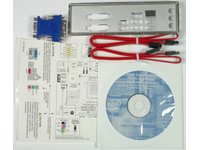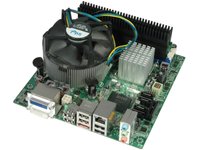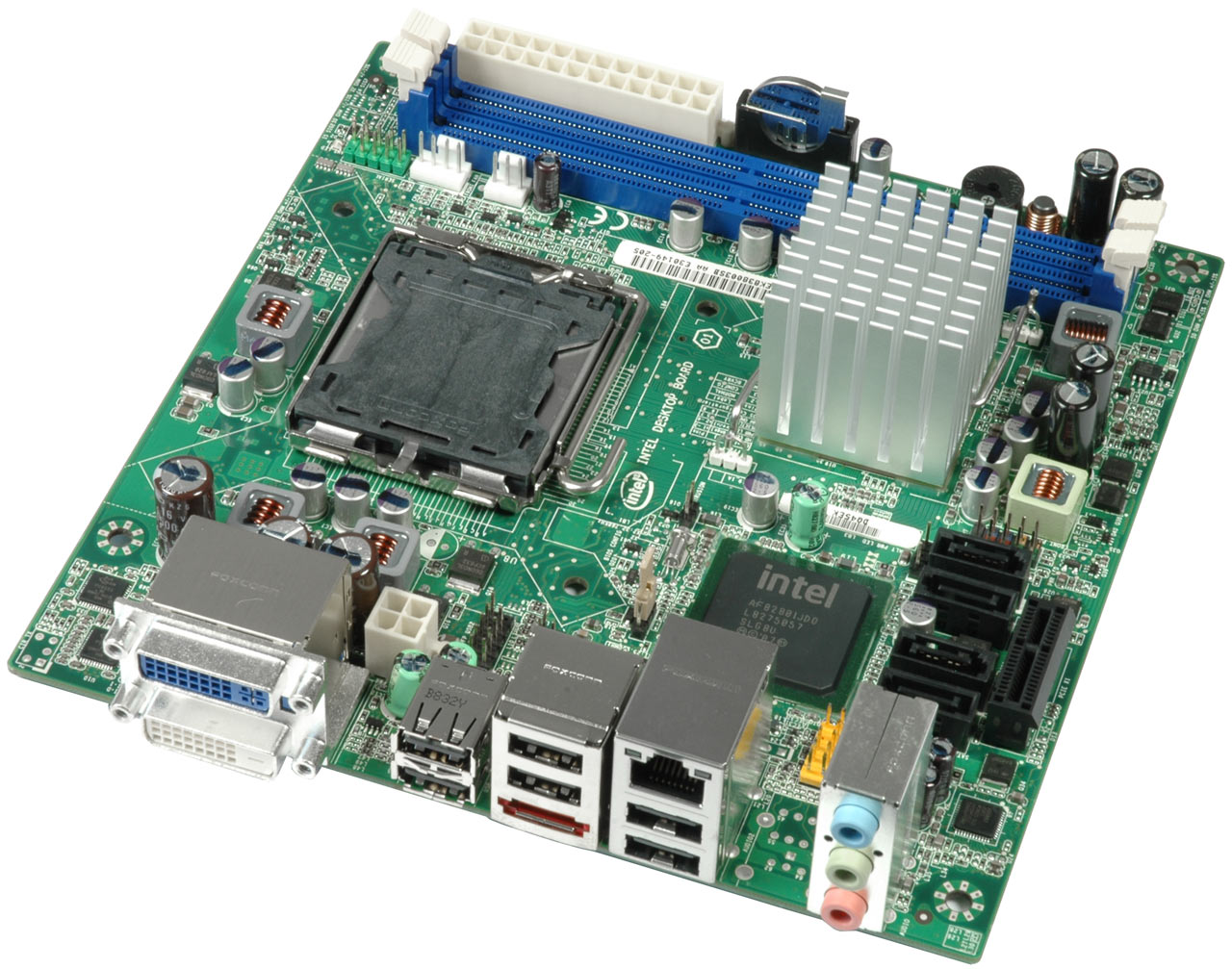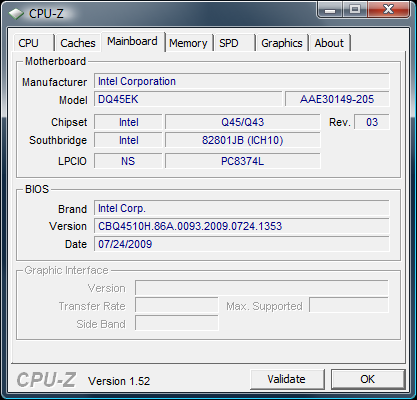Mini-ITX: Two Cases And Four Motherboards Compared
Mini-ITX Motherboard: Intel DQ45EK (LGA 775)
Intel also offers its own small form factor platform called the DQ45EK, which centers on the company's vPro-enabled Q45 and ICH10DO chipset combination.
Four SATA/300 ports are implemented, which should be sufficient for any compact enclosure. RAID 0, 1, 10, and 5 arrays are supported across the ports. The two DIMM sockets are pretty much standard in mini-ITX solutions.
Unlike iBase, Intel’s board accepts DDR2 (instead of DDR3) memory, and the maximum capacity is limited to 4GB rather than 8GB. Intel chose to put a one-lane PCI Express expansion slot on the motherboard, while its three competitors all offer different kinds of connectivity for add-on cards. Since PCIe x1 doesn’t provide a lot of bandwidth, it doesn’t make much sense for graphics, but could be useful for adding a storage, sound, or networking controller.
This board only has a three-phase voltage regulator, hence the specification allows only for LGA 775-based processors that stay within a 65W thermal envelope. Effectively, this limits your CPU choices to the Core 2 Duo family and the power efficient Core 2 Quad S models, which are rather expensive. Intel’s platform offers a Gigabit Ethernet port, six USB 2.0 ports, audio jacks for the built-in HD audio system, and one eSATA port powered by the ICH10DO southbridge.
Lastly, we’re glad to see that the board comes with two DVI outputs, allowing for perfect dual-display setups. Once again, overclocking wasn’t on the specification, not do we expect that it'll be missed.


Get Tom's Hardware's best news and in-depth reviews, straight to your inbox.
Current page: Mini-ITX Motherboard: Intel DQ45EK (LGA 775)
Prev Page Mini-ITX Motherboard: iBase MI950AF (LGA 775) Next Page Mini-ITX Motherboard: Zotac GeForce 8200 ITX WiFi (Socket AM2+)


